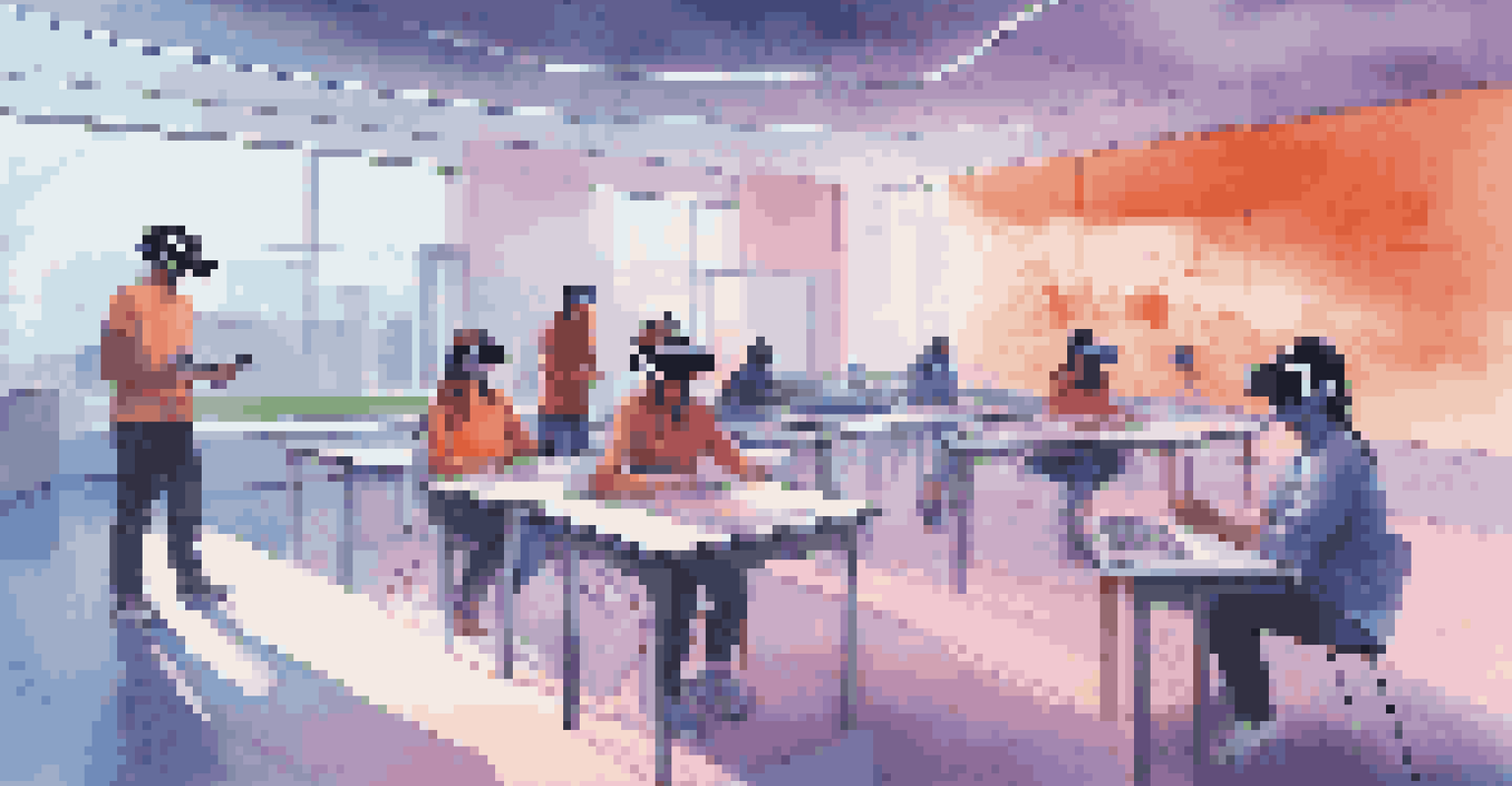Utilizing Gamification to Promote Learning in LMS Environments

Understanding Gamification and Its Importance in Learning
Gamification refers to the use of game-like elements in non-game contexts. In learning environments, this means integrating points, badges, leaderboards, and challenges to make education more engaging. By tapping into our natural love for competition and rewards, gamification can transform mundane lessons into exciting experiences.
The game is afoot! It’s all about the thrill of the chase and the excitement of the game.
Think of how video games keep players hooked with levels and rewards; similar principles can be applied in learning management systems (LMS). This approach encourages learners to progress and stay motivated. By making learning fun, we can reduce dropout rates and improve knowledge retention.
Moreover, gamification aligns with modern educational theories, emphasizing active participation. When students feel like they are part of a game, they are more likely to take ownership of their learning journey, leading to better outcomes.
Key Elements of Gamification in LMS Environments
To effectively implement gamification in LMS, you need to consider essential elements like points, badges, and levels. Points can be awarded for completing tasks or participating in discussions, while badges serve as visual representations of achievements. Levels help learners track their progress, creating a sense of accomplishment and encouraging further engagement.

Another critical feature is challenges or quests, which provide learners with specific goals to achieve. These can range from completing a module to participating in a forum discussion. By breaking down learning into manageable and rewarding tasks, students are more likely to stay engaged and motivated.
Gamification Enhances Learning Engagement
By integrating game-like elements such as points and badges, gamification makes education more appealing and helps reduce dropout rates.
Additionally, incorporating social elements, such as team challenges or collaborative projects, can enhance the learning experience. These features foster a sense of community, making learning not just an individual endeavor but a shared journey.
Creating Compelling Learning Experiences Through Gamification
To create compelling learning experiences, start by identifying the learning objectives you want to achieve. Once you have a clear goal, think about how gamification can help reach that. For example, if you want to encourage teamwork, you might design a group challenge that requires collaboration to complete.
People learn better when they are motivated, and gamification taps into that motivation.
It's essential to keep the gamified elements relevant to the content. For instance, if you're teaching a subject like history, you could create a time-travel game where students earn points by answering questions correctly. This approach not only makes learning fun but also reinforces the material in a memorable way.
Lastly, gather feedback from learners regularly to understand what works and what doesn't. This iterative process will help you refine your gamification strategy, ensuring that it remains engaging and effective over time.
Benefits of Gamification for Learners and Educators
Gamification offers numerous benefits for both learners and educators. For learners, it increases motivation and engagement, creating a more enjoyable educational experience. When students are excited about learning, they are more likely to participate actively and retain information.
For educators, gamification can simplify the assessment process. By tracking points and achievements, teachers can easily evaluate student progress and identify areas needing improvement. This data-driven approach allows for more personalized learning experiences.
Benefits for Learners and Educators
Gamification boosts motivation for learners while providing educators with easy tracking of student progress through data-driven assessments.
Additionally, gamification encourages lifelong learning habits. As students become accustomed to setting goals and striving for achievements, they are more likely to carry these skills into their future endeavors, whether in education or their careers.
Challenges of Implementing Gamification in LMS
While gamification has its perks, there are challenges to consider when implementing it in LMS. One major hurdle is ensuring that the gamified elements do not overshadow the actual learning objectives. It's crucial to strike a balance between fun and educational value.
Another challenge is the potential for competition to create anxiety among some learners. Not everyone thrives in competitive environments, so it's essential to provide a variety of engagement options. This might include solo challenges alongside team-based ones to cater to different learning styles.
Lastly, technical issues can arise when incorporating gamification features into an LMS. Ensuring that the platform can support gamified elements smoothly is vital for a seamless learning experience. Regular updates and maintenance can help alleviate these concerns.
Real-World Examples of Successful Gamification in Learning
Many organizations have successfully integrated gamification into their learning strategies. For instance, Duolingo, a popular language-learning app, uses gamified elements such as levels, points, and streaks to motivate users. This approach has led to millions of users actively engaging with the platform daily.
Another example is Cisco, which introduced gamification in their training programs. By implementing a points system, badges, and leaderboards, they saw a significant increase in participation and knowledge retention among employees. This case illustrates how gamification can enhance corporate training as well.
Future Trends in Gamification
Emerging technologies like VR/AR and AI are set to further personalize and enrich gamified learning experiences, fostering collaboration among learners.
These examples highlight that gamification can be tailored to fit various learning contexts, from language acquisition to corporate training. The key is to create an engaging and supportive environment that encourages learners to thrive.
Future Trends in Gamification for Learning
As technology advances, the future of gamification in learning looks promising. One trend is the increasing use of virtual and augmented reality (VR/AR) to create immersive learning experiences. Imagine students exploring historical sites or scientific concepts in a virtual environment, making learning even more engaging.
Another trend is the integration of artificial intelligence (AI) to personalize gamified experiences. AI can analyze learners' progress and adapt challenges to fit their individual needs, ensuring that each learner is appropriately challenged and supported.

Finally, we can expect to see a greater emphasis on social learning through gamification. Collaborative features that encourage peer interaction and teamwork will likely become more prevalent, enhancing the overall learning experience and fostering a sense of community among learners.